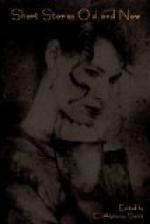“Let us assume 8, then, as e. Now of all words in the language, ‘the’ is most usual; let us see, therefore, whether there are not repetitions of any three characters, in the same order of collocation, the last of them being 8. If we discover repetitions of such letters, so arranged, they will most probably represent the word ‘the.’ On inspection, we find no less than seven such arrangements, the characters being ;48. We may, therefore, assume that the semicolon represents t, that 4 represents h, and that 8 represents e—the last being now well confirmed. Thus a great step has been taken.
“But, having established a single word, we are enabled to establish a vastly important point; that is to say, several commencements and terminations of other words. Let us refer, for example, to the last instance but one, in which the combination ;48 occurs—not far from the end of the cipher. We know that the semicolon immediately ensuing is the commencement of a word, and, of the six characters succeeding this ‘the,’ we are cognizant of no less than five. Let us set these characters down, thus, by the letters we know them to represent, leaving a space for the unknown—
t eeth.
“Here we are enabled, at once, to discard the ‘th,’ as forming no portion of the word commencing with the first t; since, by experiment of the entire alphabet for a letter adapted to the vacancy, we perceive that no word can be formed of which this th can be a part. We are thus narrowed into
t ee,
and, going through the alphabet, if necessary, as before, we arrive at the word ‘tree’ as the sole possible reading. We thus gain another letter, r, represented by (, with the words ‘the tree’ in juxtaposition.
“Looking beyond these words, for a short distance, we again see the combination ;48, and employ it by way of termination to what immediately precedes. We have thus this arrangement:
the tree;4($?34 the,
or, substituting the natural letters, where known, it reads thus:
the tree thr$?3h the.
“Now, if, in place of the unknown characters, we leave blank spaces, or substitute dots, we read thus:
the tree thr...h the,
when the word ‘through’ makes itself evident at once. But this discovery gives us three new letters, o, u, and g, represented by $, ? and 3.
“Looking now, narrowly, through the cipher for combinations of known characters, we find, not very far from the beginning, this arrangement:
83(88, or egree,
which, plainly, is the conclusion of the word ‘degree,’ and gives us another letter, d, represented by +.
“Four letters beyond the word ‘degree,’ we perceive the combination,
;46(;88*.
“Translating the known characters, and representing the unknown by dots, as before, we read thus:




